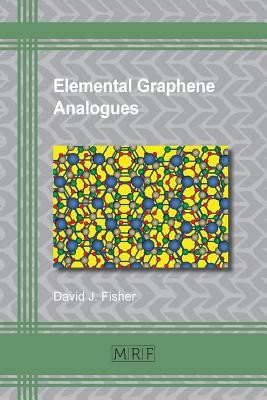
- We will send in 10–14 business days.
- Author: David J Fisher
- Publisher: Materials Research Forum LLC
- Year: 2017
- ISBN-10: 1945291303
- ISBN-13: 9781945291302
- Format: 15.2 x 22.9 x 2 cm, minkšti viršeliai
- Language: English
- SAVE -10% with code: EXTRA
Reviews
Description
One of the greatest revolutions in materials science in recent years has been the literal renaissance of age-old materials in new and unexpected guises and possessing correspondingly astounding properties. There was once a time, for instance, when textbooks declared that only metals could offer any progress in superconduction. Since then, familiar perovskites - and even humble magnesium boride - have been recognised as being so-called 'room-temperature' superconductors. Carbon in particular has benefited from this revolution and has now found application as routinely deposited diamond coatings and as C60 'buckyballs'.
The most recent innovation has been the discovery and preparation of graphene; single-monolayer carbon having a remarkable strength. This success has naturally led researchers to ask whether other materials might also be prepared in an analogous monolayer form and offer similarly amazing properties.
The present monograph summarizes all of the work carried out on such monolayer materials up to the beginning of 2017 including Antimonene, Arsenene, Bismuthene, Borophene, Germanene, Indiene, Phosphorene, Silicene, Stanene, Tinene. Most of the work done so far on these 'elemental graphene analogues' has been theoretical, but the existing experimental data suggest that they may well become as useful as graphene.
EXTRA 10 % discount with code: EXTRA
The promotion ends in 21d.03:13:44
The discount code is valid when purchasing from 10 €. Discounts do not stack.
- Author: David J Fisher
- Publisher: Materials Research Forum LLC
- Year: 2017
- ISBN-10: 1945291303
- ISBN-13: 9781945291302
- Format: 15.2 x 22.9 x 2 cm, minkšti viršeliai
- Language: English English
One of the greatest revolutions in materials science in recent years has been the literal renaissance of age-old materials in new and unexpected guises and possessing correspondingly astounding properties. There was once a time, for instance, when textbooks declared that only metals could offer any progress in superconduction. Since then, familiar perovskites - and even humble magnesium boride - have been recognised as being so-called 'room-temperature' superconductors. Carbon in particular has benefited from this revolution and has now found application as routinely deposited diamond coatings and as C60 'buckyballs'.
The most recent innovation has been the discovery and preparation of graphene; single-monolayer carbon having a remarkable strength. This success has naturally led researchers to ask whether other materials might also be prepared in an analogous monolayer form and offer similarly amazing properties.
The present monograph summarizes all of the work carried out on such monolayer materials up to the beginning of 2017 including Antimonene, Arsenene, Bismuthene, Borophene, Germanene, Indiene, Phosphorene, Silicene, Stanene, Tinene. Most of the work done so far on these 'elemental graphene analogues' has been theoretical, but the existing experimental data suggest that they may well become as useful as graphene.


Reviews